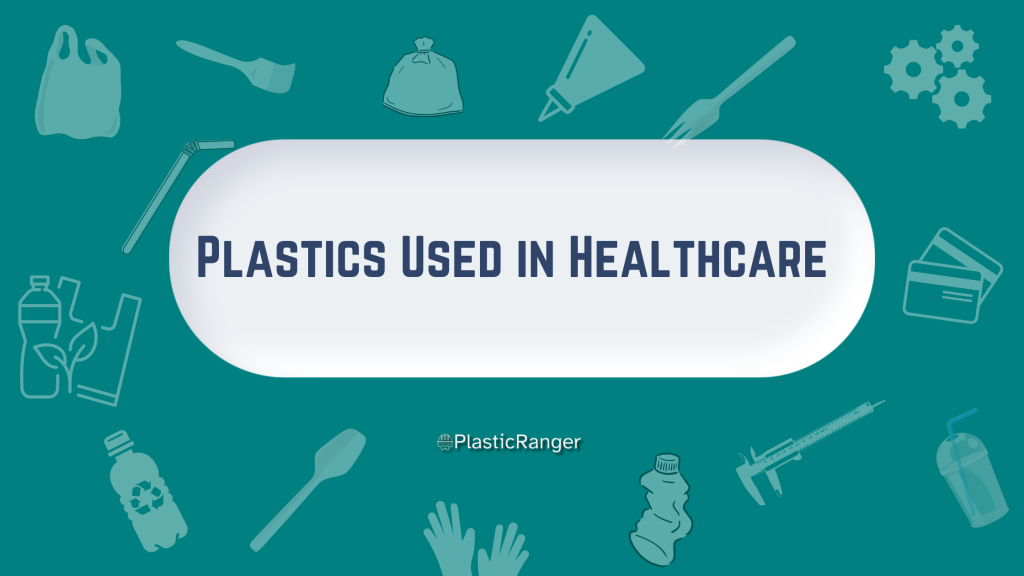
Plastics Used in Healthcare
In modern healthcare, the use of plastics has become integral. These versatile materials are used in various applications, from packaging to medical devices and disposable products. Understanding the different types of plastics used in healthcare, their properties, and their applications can help one appreciate their significant role in medical advancements.
This guide explores the various plastics used in healthcare, their characteristics, and their benefits.
Overview
Plastics have revolutionized healthcare, offering cost-effective, durable, and sterile materials that can be molded into various shapes and forms. They are lightweight, corrosion-resistant, and can be customized with different levels of flexibility and rigidity, making them an invaluable resource in the healthcare sector.
Types of Plastics Used in Healthcare
Polyethylene (PE)
Properties: Highly versatile, available in high-density (HDPE) and low-density (LDPE) forms, resistant to chemicals and moisture.
Applications: Used in containers, bottles, trays, and tubing. HDPE is typically utilized for packaging materials, while LDPE is often found in squeeze bottles and flexible tubes.
Polypropylene (PP)
Properties: Polypropylene is Tough, resistant to chemicals, lightweight, and has a high melting point.
Applications: Commonly found in syringes, medical bottles, laboratory equipment, and disposable gowns.
Polyvinyl Chloride (PVC)
Properties: PVC is flexible, lightweight, considered one of the best UV resistant plastics, and has excellent biocompatibility. It can be made more rigid or flexible with the addition of plasticizers.
Applications: Used in blood bags, tubing, IV bags, and medical gloves.
Polystyrene (PS)
Properties: Polystyrene is clear, hard, and brittle. It can be made into foam, which is lightweight and insulating.
Applications: Used in lab ware, Petri dishes, insulation trays, and disposable cutlery.
Polycarbonate (PC)
Properties: Polycarbonate is Tough, clear, and can withstand high temperatures. Excellent impact resistance and optical properties.
Applications: Used in surgical instruments, medical devices, and in the manufacturing of eyeglass lenses.
Polyethylene Terephthalate (PET)
Properties: PET is Transparent, lightweight, and strong, with good barrier properties against moisture and gases.
Applications: Utilized in medical bottles, surgical trays, and thermoformed blister packaging.
Polymethyl Methacrylate (PMMA)
Properties: Acrylic is transparent, shatter-resistant, and lightweight, with good optical properties.
Applications: Often used in dental prosthetics, bone cement, and intraocular lenses.
Considerations When Choosing Plastics
Biocompatibility
The plastic material must be compatible with biological tissues to avoid adverse reactions.
Serializability
The ability to be sterilized effectively by heat, chemicals, or radiation is vital in healthcare settings to prevent infection.
Mechanical Properties
Depending on the application, the material may need specific mechanical properties such as flexibility, toughness, or rigidity.
Chemical Resistance
The resistance to degradation by chemicals, including pharmaceuticals and bodily fluids, is a necessary consideration.
Cost-Effectiveness
The material chosen should offer an effective solution without unnecessarily escalating costs.
Environmental Impact
The material’s environmental footprint, including its recyclability and biodegradability, is becoming increasingly important.
Regulatory Compliance
Plastics used in healthcare must comply with stringent regulations to ensure safety and effectiveness. These regulations stipulate the necessary tests and documentation to demonstrate biocompatibility, sterilizability, and other vital characteristics.
Compliance with standards such as the ISO 10993 for biological evaluation of medical devices is essential.
Innovations and Future Trends
The future of plastics in healthcare is promising, with continuous research and development aimed at creating new materials with improved properties and functionalities. Some future trends and innovations in this sector might include:
Biodegradable Plastics
Developing plastics that can break down naturally reduces environmental impact.
Smart Plastics
Technology integration into plastics, creating smart medical devices and packaging solutions.
Nanocomposites
Using nanotechnology to enhance the properties of plastics potentially leads to new applications in drug delivery and medical imaging.
3D Printing
Leveraging 3D printing technologies to create custom medical devices and prosthetics using various plastic materials.
Summary
Plastics have been significant in helping the healthcare industry grow and improve. They are flexible, affordable, and can be made to fit many different needs. They are everywhere in healthcare, from packaging to creating medical devices and artificial limbs. Knowing more about the various kinds of plastics and what they can do helps people make better choices when using them.
As new developments keep coming in, plastics will continue to be central in improving healthcare, bringing new ways to enhance the care and well-being of patients.
Quick Navigation
